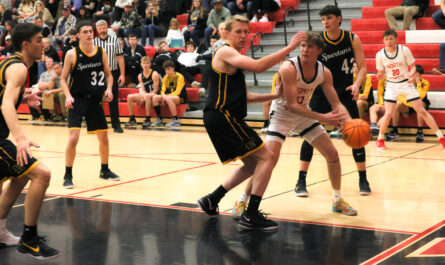North Sanpete, Manti, Juab, Delta and Union. Though only five schools, they make up the entire 3A Region 14, or at least they will, starting next fall, after the changes made in this year’s realignment by the UHSAA.
Realignment happens every two years as a way to keep athletic classifications and regions balanced. It is the process that determines whether a school should move up or down in classification and what changes the regions to match it.
In Utah, schools are sorted into six classifications based on enrollment numbers. The classifications are 1A-6A, with 1A being the smallest and 6A being the largest. Following this year’s realignment there are 26 schools in 6A, 34 in 5A, 14 in 4A, 22 in 3A, 28 in 2A, and 31 in 1A, for a total of 155 schools divided into 22 different regions.
This process is difficult and time-consuming, generally taking several weeks to complete. However, there is protocol already in place to help begin the decision making process.
“Their first objective in that protocol is to put them into classifications, they don’t even look at regions, they just look at classifications,” said Jim Langford, Region 14 representative on the USHAA Executive Committee. “They go by enrollment size first and for the bigger schools they only look at sophomore and junior year enrollment, just two grades worth of kids to get that number. When they get to a certain point, and I want to say it’s about when they get to 3A… …they shift from doing the top two grades down to the top three grades”
After schools are sorted into classifications, it then falls to the Executive Committee to put them into regions. The Executive Committee is a group of representatives, usually an Athletic Director or a principal from each region, that is part of the governing body of the USHAA. Regions are groups of schools from the same classification that compete against each other in athletic competitions.
“Once they get them into classifications, it’s a whole nother step to step back and go ‘now we’ll put them into regions,’” Langford said. “When you get to different regions, you don’t look at enrollment numbers, you look at geographical areas to put [schools] in the same region.”
The committee makes decisions regarding regions based on geographical locations and natural rivalries. Once the committee decides on regions, the proposal goes to the Board of Trustees to get approval.
“The Board of Trustees and the Executive Committee are two separate bodies,” Langford said. “The Executive Committee is one principal or Athletic Director from each region, but the Board of Trustees has only one principal or [school] board member from each classification.”
It’s only after the proposal has been approved by both the Executive Committee and the Board of Trustees that the changes are made.
This year’s realignment made a couple of changes for NS’s region. For the past two years, American Leadership Academy and Maeser Prep have been in Region 14. Now, with the changes made in realignment, ALA is part of Region 15, a region made up of 3A private schools.
Losing these two schools will bring Region 14 down to only 5 schools, meaning that teams will have to schedule more non-region games to make up for the four missing region games.
“It makes it harder because then you have to schedule more games,” said Tyler Bailey, Assistant Athletic Director at NS. “It really makes it more difficult for finding younger division games.”
Another change that realignment brought was the movement of Canyon View, Ogden and Ben Lomond High Schools down to 3A from 4A and San Juan and South Sevier High Schools down to 2A from 3A.
But none of these changes are a surprise to Bailey.
“I wasn’t surprised by anything at all, to be honest,” Bailey said. “I figured there wouldn’t be a ton of movement, especially in the 3A ranks.”
While these classification changes didn’t have a huge impact on most sports and activities at NS, football was more heavily affected. Football regions and classifications are different from other sports. For the past two years, NS’s football region consisted of NS, Manti, Juab, Union, ALA and Delta. However, following this year’s realignment, ALA and Delta moved down to 2A in football and Union was moved to the northern region.
“So we added Richfield and Canyon View to the new realignment, and we lost Delta,” said NS football coach Rhett Bird. “We were hoping that we would have more teams in 3A, but it’s only the two region, north and south, and we’re happy with who’s in our region.”




